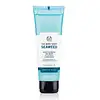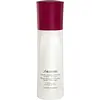What's inside
What's inside
 Key Ingredients
Key Ingredients

 Benefits
Benefits

 Concerns
Concerns

 Ingredients Side-by-side
Ingredients Side-by-side

Water
Skin ConditioningSodium Laureth Sulfate
CleansingPolysorbate 20
EmulsifyingPEG-150 Distearate
EmulsifyingSodium Cocoamphoacetate
CleansingCocamidopropyl Betaine
CleansingPhenoxyethanol
PreservativeCitric Acid
BufferingSodium Benzoate
MaskingParfum
MaskingSodium Chloride
MaskingButylene Glycol
HumectantMenthol
MaskingTrisodium Ethylenediamine Disuccinate
Aloe Barbadensis Leaf Juice Powder
Skin ConditioningFucus Vesiculosus Extract
EmollientLinalool
PerfumingBenzyl Salicylate
PerfumingBenzyl Alcohol
PerfumingPropylene Glycol
HumectantSodium Hydroxide
BufferingChondrus Crispus Extract
Skin ConditioningWater, Sodium Laureth Sulfate, Polysorbate 20, PEG-150 Distearate, Sodium Cocoamphoacetate, Cocamidopropyl Betaine, Phenoxyethanol, Citric Acid, Sodium Benzoate, Parfum, Sodium Chloride, Butylene Glycol, Menthol, Trisodium Ethylenediamine Disuccinate, Aloe Barbadensis Leaf Juice Powder, Fucus Vesiculosus Extract, Linalool, Benzyl Salicylate, Benzyl Alcohol, Propylene Glycol, Sodium Hydroxide, Chondrus Crispus Extract
Water
Skin ConditioningGlycerin
HumectantSodium Laureth Sulfate
CleansingCocamidopropyl Betaine
CleansingPEG-8 Glyceryl Isostearate
EmollientPEG/PPG-14/7 Dimethyl Ether
Skin ConditioningEthylhexylglycerin
Skin ConditioningTriethylhexanoin
MaskingSodium Methyl Cocoyl Taurate
CleansingButylene Glycol
HumectantAlcohol Denat.
AntimicrobialSodium Citrate
BufferingSodium Benzoate
MaskingPhenoxyethanol
PreservativeParfum
MaskingCitric Acid
BufferingDisodium EDTA
BHT
AntioxidantLinalool
PerfumingOryza Sativa Germ Oil
EmollientAlcohol
AntimicrobialTocopherol
AntioxidantHamamelis Virginiana Leaf Extract
Skin ConditioningBetaine
HumectantHydrolyzed Silk
HumectantWater, Glycerin, Sodium Laureth Sulfate, Cocamidopropyl Betaine, PEG-8 Glyceryl Isostearate, PEG/PPG-14/7 Dimethyl Ether, Ethylhexylglycerin, Triethylhexanoin, Sodium Methyl Cocoyl Taurate, Butylene Glycol, Alcohol Denat., Sodium Citrate, Sodium Benzoate, Phenoxyethanol, Parfum, Citric Acid, Disodium EDTA, BHT, Linalool, Oryza Sativa Germ Oil, Alcohol, Tocopherol, Hamamelis Virginiana Leaf Extract, Betaine, Hydrolyzed Silk
Ingredients Explained
These ingredients are found in both products.
Ingredients higher up in an ingredient list are typically present in a larger amount.
Butylene Glycol (or BG) is used within cosmetic products for a few different reasons:
Overall, Butylene Glycol is a safe and well-rounded ingredient that works well with other ingredients.
Though this ingredient works well with most skin types, some people with sensitive skin may experience a reaction such as allergic rashes, closed comedones, or itchiness.
Learn more about Butylene GlycolCitric Acid is an alpha hydroxy acid (AHA) naturally found in citrus fruits like oranges, lemons, and limes.
Like other AHAs, citric acid can exfoliate skin by breaking down the bonds that hold dead skin cells together. This helps reveal smoother and brighter skin underneath.
However, this exfoliating effect only happens at high concentrations (20%) which can be hard to find in cosmetic products.
Due to this, citric acid is usually included in small amounts as a pH adjuster. This helps keep products slightly more acidic and compatible with skin's natural pH.
In skincare formulas, citric acid can:
While it can provide some skin benefits, research shows lactic acid and glycolic acid are generally more effective and less irritating exfoliants.
Most citric acid used in skincare today is made by fermenting sugars (usually from molasses). This synthetic version is identical to the natural citrus form but easier to stabilize and use in formulations.
Read more about some other popular AHA's here:
Learn more about Citric AcidCocamidopropyl Betaine is a fatty acid created by mixing similar compounds in coconut oil and dimethylaminopropylamine, a compound with two amino groups.
This ingredient is a surfactant and cleanser. It helps gather the dirt, pollutants, and other impurities in your skin to be washed away. It also helps thicken a product and make the texture more creamy.
Being created from coconut oil means Cocamidopropyl Betaine is hydrating for the skin.
While Cocamidopropyl Betaine was believed to be an allergen, a study from 2012 disproved this. It found two compounds in unpure Cocamidopropyl Betaine to be the irritants: aminoamide and 3-dimethylaminopropylamine. High-grade and pure Cocamidopropyl Betaine did not induce allergic reactions during this study.
Learn more about Cocamidopropyl BetaineLinalool is a fragrance and helps add scent to products. It's derived from common plants such as cinnamon, mint, citrus, and lavender.
Like Limonene, this ingredient oxidizes when exposed to air. Oxidized linalool can cause allergies and skin sensitivity.
This ingredient has a scent that is floral, spicy tropical, and citrus-like.
Learn more about LinaloolParfum is a catch-all term for an ingredient or more that is used to give a scent to products.
Also called "fragrance", this ingredient can be a blend of hundreds of chemicals or plant oils. This means every product with "fragrance" or "parfum" in the ingredients list is a different mixture.
For instance, Habanolide is a proprietary trade name for a specific aroma chemical. When used as a fragrance ingredient in cosmetics, most aroma chemicals fall under the broad labeling category of “FRAGRANCE” or “PARFUM” according to EU and US regulations.
The term 'parfum' or 'fragrance' is not regulated in many countries. In many cases, it is up to the brand to define this term.
For instance, many brands choose to label themselves as "fragrance-free" because they are not using synthetic fragrances. However, their products may still contain ingredients such as essential oils that are considered a fragrance by INCI standards.
One example is Calendula flower extract. Calendula is an essential oil that still imparts a scent or 'fragrance'.
Depending on the blend, the ingredients in the mixture can cause allergies and sensitivities on the skin. Some ingredients that are known EU allergens include linalool and citronellol.
Parfum can also be used to mask or cover an unpleasant scent.
The bottom line is: not all fragrances/parfum/ingredients are created equally. If you are worried about fragrances, we recommend taking a closer look at an ingredient. And of course, we always recommend speaking with a professional.
Learn more about ParfumPhenoxyethanol is a preservative that has germicide, antimicrobial, and aromatic properties. Studies show that phenoxyethanol can prevent microbial growth. By itself, it has a scent that is similar to that of a rose.
It's often used in formulations along with Caprylyl Glycol to preserve the shelf life of products.
Sodium Benzoate is a preservative. It's used in both cosmetic and food products to inhibit the growth of mold and bacteria. It is typically produced synthetically.
Both the US FDA and EU Health Committee have approved the use of sodium benzoate. In the US, levels of 0.1% (of the total product) are allowed.
Sodium benzoate works as a preservative by inhibiting the growth of bacteria inside of cells. It prevents the cell from fermenting a type of sugar using an enzyme called phosphofructokinase.
It is the salt of benzoic acid. Foods containing sodium benzoate include soda, salad dressings, condiments, fruit juices, wines, and snack foods.
Studies for using ascorbic acid and sodium benzoate in cosmetics are lacking, especially in skincare routines with multiple steps.
We always recommend speaking with a professional, such as a dermatologist, if you have any concerns.
Learn more about Sodium BenzoateSodium Laureth Sulfate (SLES) is a foaming, cleansing, and emulsifying ingredient. It is created from palm kernel oil or coconut oil. SLES is not the same as sodium lauryl sulfate. It is much milder and less likely to irritate.
SLES helps create foam in personal products. It also prevents ingredients from separating, helping to elongate the shelf life.
Sodium Laureth Sulfate is a type of sulfate. It can be drying. We recommend speaking with a professional about using this ingredient if you have concerns.
Learn more about Sodium Laureth SulfateWater. It's the most common cosmetic ingredient of all. You'll usually see it at the top of ingredient lists, meaning that it makes up the largest part of the product.
So why is it so popular? Water most often acts as a solvent - this means that it helps dissolve other ingredients into the formulation.
You'll also recognize water as that liquid we all need to stay alive. If you see this, drink a glass of water. Stay hydrated!
Learn more about Water